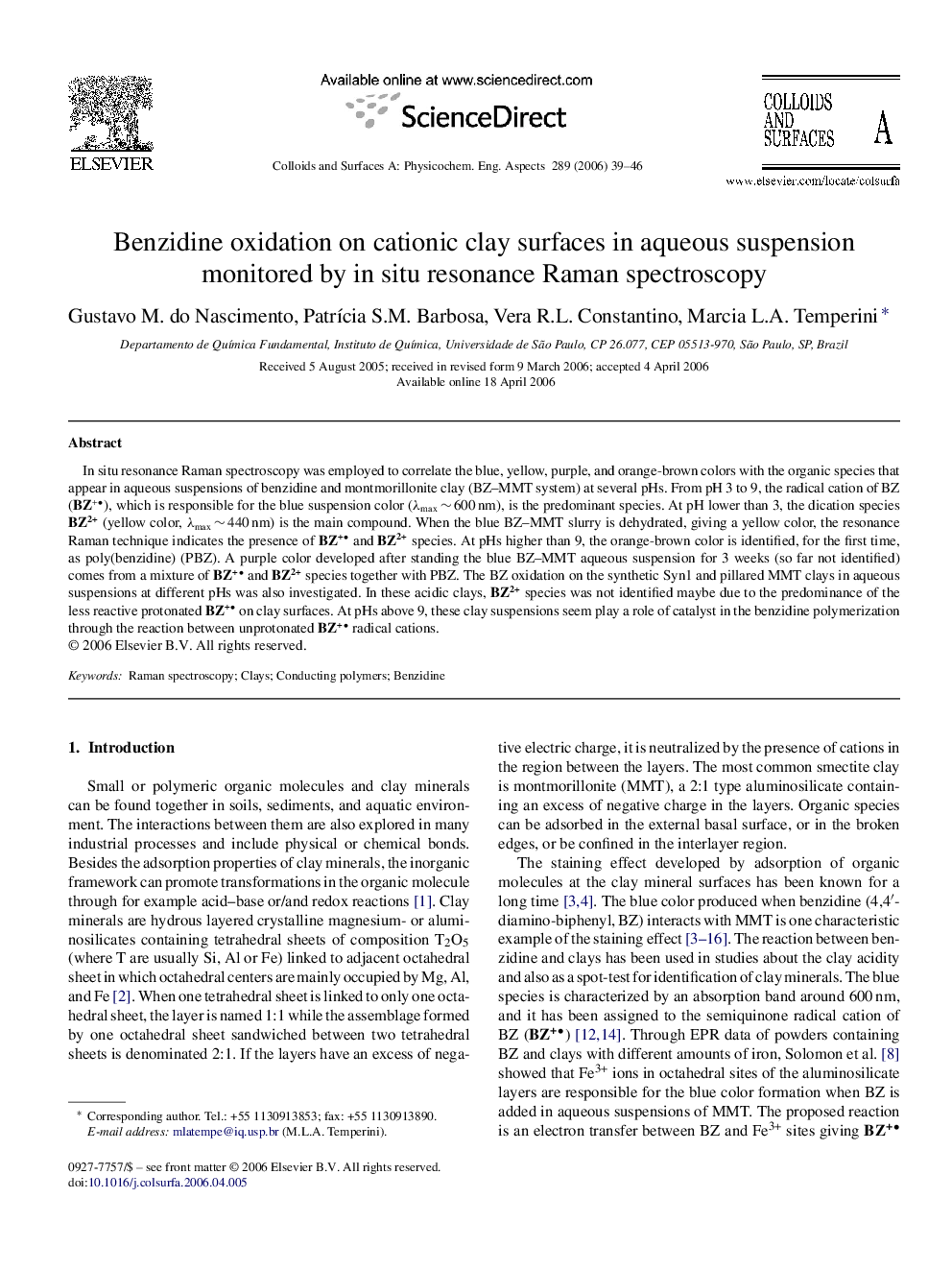| Article ID | Journal | Published Year | Pages | File Type |
|---|---|---|---|---|
| 598128 | Colloids and Surfaces A: Physicochemical and Engineering Aspects | 2006 | 8 Pages |
In situ resonance Raman spectroscopy was employed to correlate the blue, yellow, purple, and orange-brown colors with the organic species that appear in aqueous suspensions of benzidine and montmorillonite clay (BZ–MMT system) at several pHs. From pH 3 to 9, the radical cation of BZ (BZ+), which is responsible for the blue suspension color (λmax ∼ 600 nm), is the predominant species. At pH lower than 3, the dication species BZ2+ (yellow color, λmax ∼ 440 nm) is the main compound. When the blue BZ–MMT slurry is dehydrated, giving a yellow color, the resonance Raman technique indicates the presence of BZ+ and BZ2+ species. At pHs higher than 9, the orange-brown color is identified, for the first time, as poly(benzidine) (PBZ). A purple color developed after standing the blue BZ–MMT aqueous suspension for 3 weeks (so far not identified) comes from a mixture of BZ+ and BZ2+ species together with PBZ. The BZ oxidation on the synthetic Syn1 and pillared MMT clays in aqueous suspensions at different pHs was also investigated. In these acidic clays, BZ2+ species was not identified maybe due to the predominance of the less reactive protonated BZ+ on clay surfaces. At pHs above 9, these clay suspensions seem play a role of catalyst in the benzidine polymerization through the reaction between unprotonated BZ+ radical cations.
